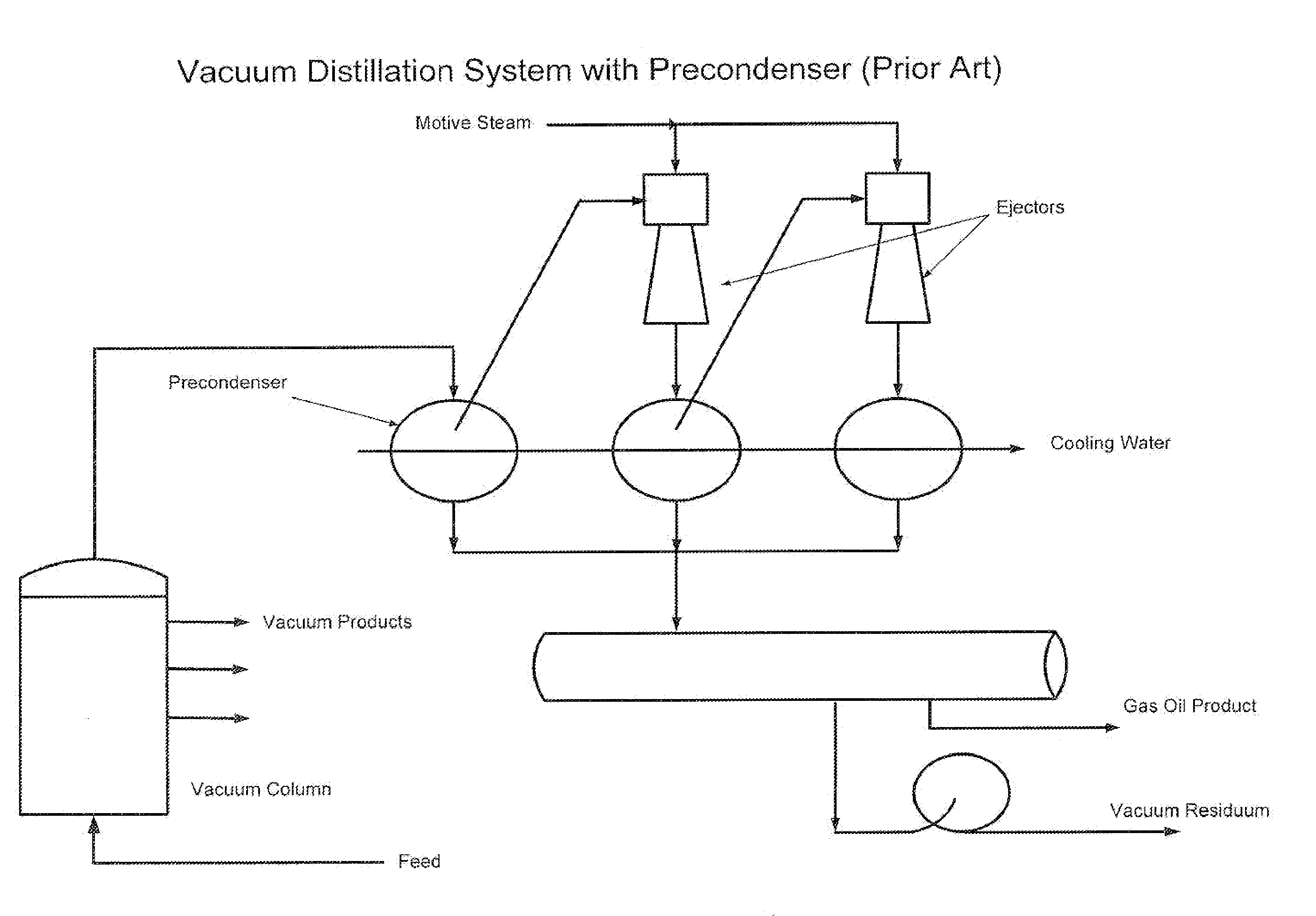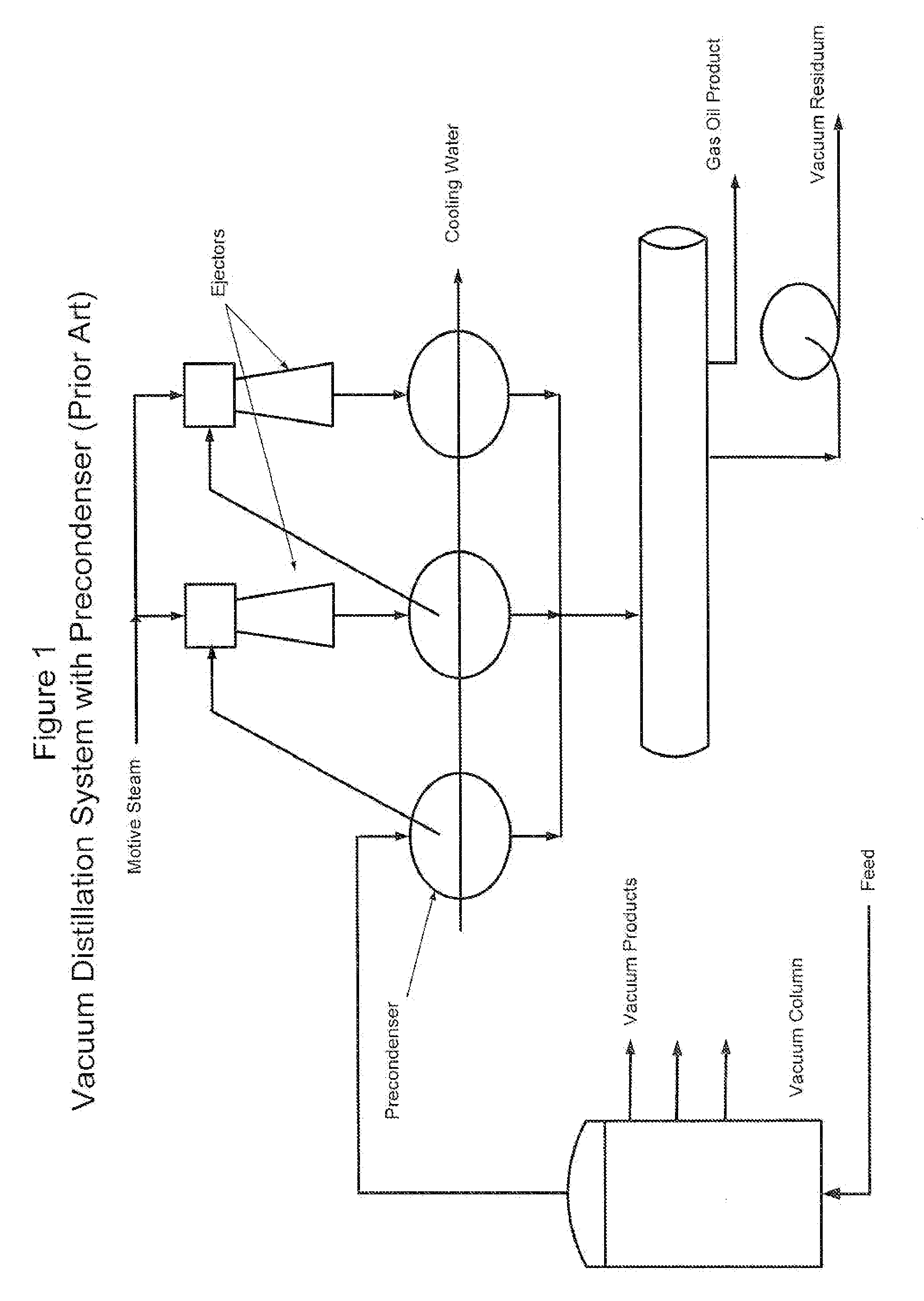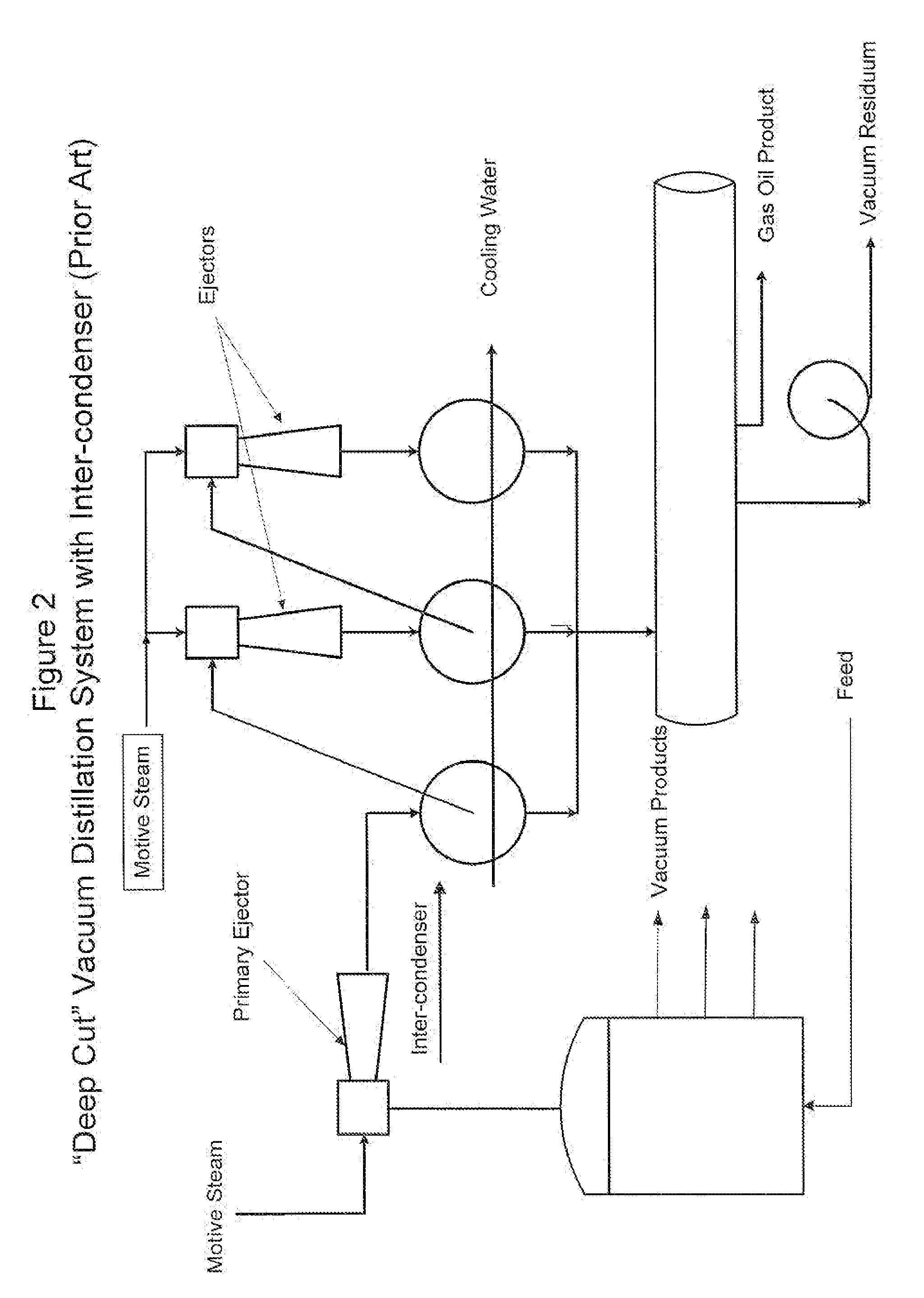Plant and method for vacuum distillation of hydrocarbon liquids
a technology of hydrocarbon liquid and vacuum distillation, which is applied in vacuum distillation, vacuum distillation separation, separation processes, etc., can solve the problems of low design backpressure in the primary ejector, the primary ejector is not typically designed to take advantage, and the suction pressure of the ejector cannot be measured, so as to reduce the pressure of the vacuum distillation column and increase the operating flexibility. , the effect of reducing the pressure of the vacuum column
- Summary
- Abstract
- Description
- Claims
- Application Information
AI Technical Summary
Benefits of technology
Problems solved by technology
Method used
Image
Examples
Embodiment Construction
[0011] Refer to FIG. 5. A system for vacuum distillation of a hydrocarbon liquid, comprises a vacuum distillation column 10, a pipeline for receiving a heated feed 20, a gaseous vapor discharge pipeline 30, at least one liquid discharge pipeline 40, a first condenser 45, a primary vacuum producing ejector 50 having an inlet end 50A and an outlet end 50B, connected to the first condenser 46 via pipeline 60, and auxiliary vacuum producing ejector 70 having an inlet end 70A connected to the gaseous vapor discharge pipeline 30 and outlet end connected to the first condenser 45, either via pipeline 50C in one embodiment or directly in an alternative embodiment. The system further comprises at least one-second stage vacuum producing ejector 800 having an inlet end connected to the first condenser 45 via pipeline 90 and an outlet end connected to at least one-second condenser 100 via pipeline 110. Preferably, the system includes at least two-second stage vacuum producing ejectors 80, 81 an...
PUM
| Property | Measurement | Unit |
|---|---|---|
| temperature | aaaaa | aaaaa |
| pressure | aaaaa | aaaaa |
| pressure | aaaaa | aaaaa |
Abstract
Description
Claims
Application Information
 Login to View More
Login to View More - R&D
- Intellectual Property
- Life Sciences
- Materials
- Tech Scout
- Unparalleled Data Quality
- Higher Quality Content
- 60% Fewer Hallucinations
Browse by: Latest US Patents, China's latest patents, Technical Efficacy Thesaurus, Application Domain, Technology Topic, Popular Technical Reports.
© 2025 PatSnap. All rights reserved.Legal|Privacy policy|Modern Slavery Act Transparency Statement|Sitemap|About US| Contact US: help@patsnap.com



